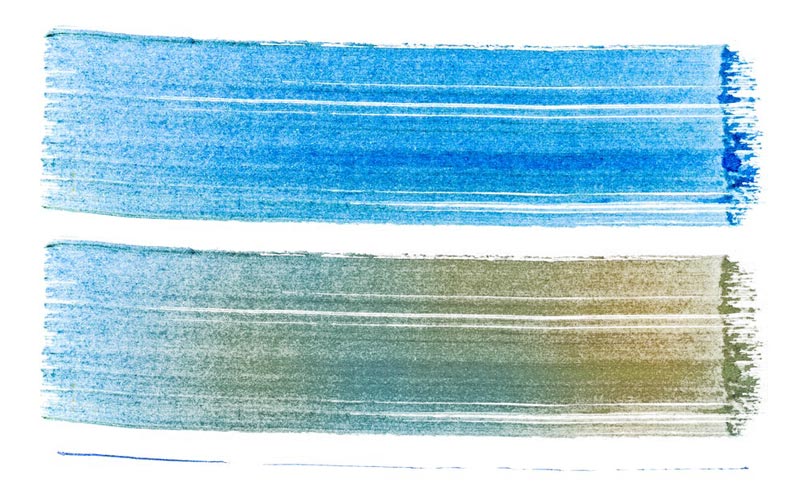We often get asked, what do we mean when we say something is a "Pure Color" or a "Primary Color." Is there a difference?
Pure Colors- These are colors that only have one specific dye molecule, they do not have ANYTHING else mixed in with them. If you use less dye they will get predictably paler, if you use more they will get more and more saturated. However, not all Pure Colors are Primary Colors, for example Fiber Reactive Dye #117 Grape is a pure purple, but purple is a secondary color on the color wheel, so it is not considered a Primary Color.
Primary Colors- These are colors that are the basic ones for mixing. Traditionally, primary colors are red, yellow and blue. Mainly this holds true for mixing pigments, which are what colors paint, and they are fairly opaque. For dyes, we use the same primary colors that are used for mixing light sources (like theater lights or computer monitors), since they are also transparent: Magenta, Yellow and Cyan. Primary colors should also be Pure Colors so that color recipes can be predictably repeated if desired.

How do you know if a color is a Pure Color or a Primary?
All of our website color charts provide information on if a color is a pure color or primary. All of our pure colors include Color Index Code/MX numbers after them (newer pure colors may have different designations). If they are also primary colors, that is included in parenthesis after the color name and color code information. Those equivalents to Magenta, Yellow and Cyan in the Fiber Reactive Dyes are Fuchsia, Lemon Yellow and Turquoise.

In the screenshot below, you can see that #1 Lemon Yellow is also called Yellow 86 or MX-8G. It is also a primary color. Two other yellows, #3 Golden Yellow and #4 Deep Yellow are also pure colors, but we don't consider them the primary mixing yellows so they do not have that listed at the end.

ALL other colors that do not have a Color Index Code/MX Numbers are mixes of two or more of those pure colors.
How is this useful?
If you are looking to start mixing your own colors and shades it helps to know what dyes are primary and pure colors so you can keep track and make your own color recipes or follow ones from a book. Mixing with pure colors is more consistent than mixing with mixed dye colors, due to the occasional slight variation of dye lots, which is due to the occasional slight variations in the pure primary colors, which can come in slightly stronger or weaker.
Ice Dyeing looks most interesting when you use mixed colors as the melting ice causes the pure colors to split out as they are pulled through the fabric. This is due to the size of the dye molecules varying, as pure colors with smaller molecules travel through the fabric at a faster rate than colors with larger molecules. Also some colors "strike" or become permanent in place faster in the presence of the soda ash than others, causing the colors that strike more slowly to travel more. 3 to 4 color mixes like blacks, grays and browns can do some pretty dramatic splitting. Using pure colors for ice dyeing is much less dramatic so dyers may want to avoid them or use them sparingly as accents.
Tie-Dyers might want to add a little Super Clear or a tiny amount of Sodium Alginate to colors that are mixes if they want to create sharp lines between colors that they are applying and not have the component pure colors bleed at the edges or into other colors.
So now you know! To learn more about color mixing and dye chemistry check out this article.












